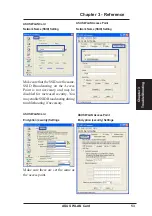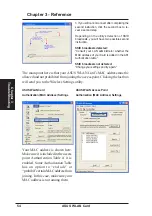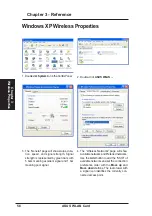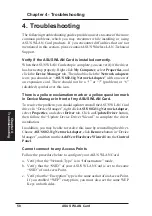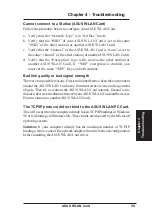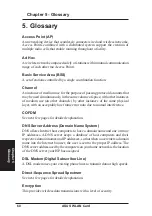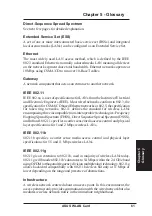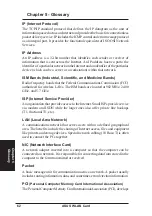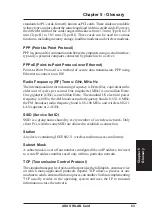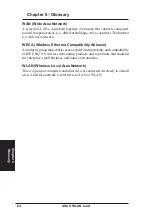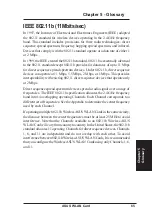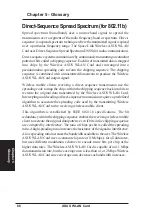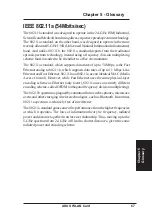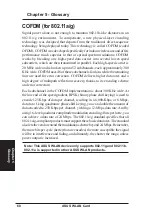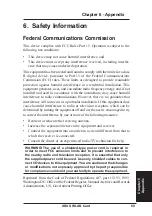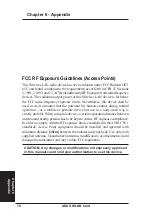
ASUS WLAN Card
67
Chapter 5
Chapter 5 - Glossary
Glossary
IEEE 802.11a (54Mbits/sec)
The 802.11b standard was designed to operate in the 2.4-GHz ISM (Industrial,
Scientific and Medical) band using direct-sequence spread-spectrum technology.
The 802.11a standard, on the other hand, was designed to operate in the more
recently allocated 5-GHz UNII (Unlicensed National Information Infrastructure)
band. And unlike 802.11b, the 802.11a standard departs from the traditional
spread-spectrum technology, instead using a frequency division multiplexing
scheme that's intended to be friendlier to office environments.
The 802.11a standard, which supports data rates of up to 54 Mbps, is the Fast
Ethernet analog to 802.11b, which supports data rates of up to 11 Mbps. Like
Ethernet and Fast Ethernet, 802.11b and 802.11a use an identical MAC (Media
Access Control). However, while Fast Ethernet uses the same physical-layer
encoding scheme as Ethernet (only faster), 802.11a uses an entirely different
encoding scheme, called OFDM (orthogonal frequency division multiplexing).
The 802.11b spectrum is plagued by saturation from wireless phones, microwave
ovens and other emerging wireless technologies, such as Bluetooth. In contrast,
802.11a spectrum is relatively free of interference.
The 802.11a standard gains some of its performance from the higher frequencies
at which it operates. The laws of information theory tie frequency, radiated
power and distance together in an inverse relationship. Thus, moving up to the
5-GHz spectrum from 2.4 GHz will lead to shorter distances, given the same
radiated power and encoding scheme.
Summary of Contents for WL-138GV2
Page 6: ...6 ASUS WLAN Card ...

